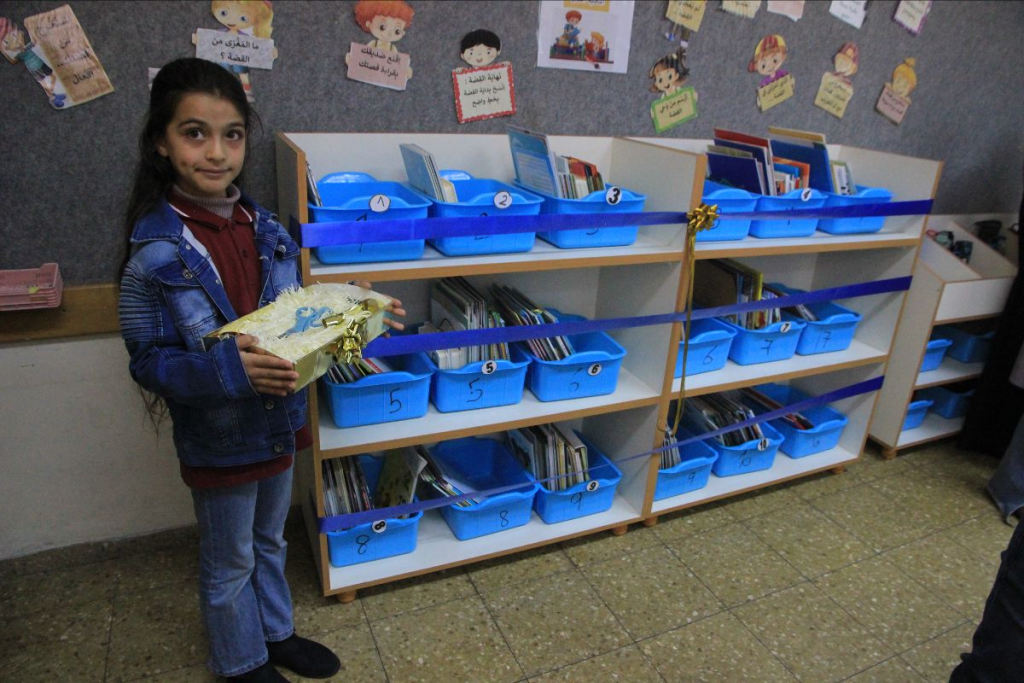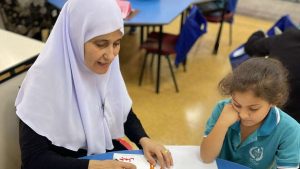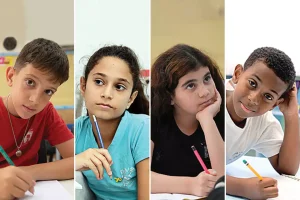Education affairs: ICEI and the Education Ministry’s Tamkin program looks to create equal opportunities.
[Excerpted from the article that appeared March 22, 2024 in the Jerusalem Post]
By JUDITH SEGALOFF

Iraq al-Shabaab is [one of 15 schools] implementing the Tamkin Joint Venture, a promising new educational collaboration expected to mark a potential shift in elementary education.
Arab students are twice as likely as their Jewish peers to leave school prematurely and score notably lower on OECD international assessments. The Tamkin system hopes to boost reading confidence and […improve performance in] schools like Iraq al-Shabaab, marking a potential shift in Arab elementary education across Israel.
Arab elementary schools are disproportionately lacking resources. To address this, the Education Ministry is jointly investing NIS 33 million in the Tamkin Joint Venture with the Israel Center for Educational Innovation (ICEI) to increase Arab literacy in low-income district Arab-Israeli schools. The word “tamkin” means “foundation” or “empowerment” in Arabic.
Don Futterman, executive director and founder of the Israel Center for Educational Innovation (ICEI), pointed out that while Arab-Israeli children speak Arabic it is not unusual for those from lower economic sectors to have basic literacy challenges mastering Arabic, reflecting the complexities of the differences in spoken and written Arabic language. Additionally, many, even in mixed schools, never learn to communicate in Hebrew. This leaves them at a disadvantage when it comes to pursuing academic studies and white-collar employment later in life. The ICEI pilot program in Arab elementary schools began five years ago, administered by staff based in both Kfar Saba and Nazareth.
The Tamkin Joint Venture targets the needs of Arab elementary schools, where many children are underperforming. Since the beginning of this year, the Tamkin Joint Venture has been operational in 15 schools. They provide a literacy coach to each school and have former principals mentor the current principals. Additionally, each classroom is equipped with a robust library to encourage reading.

“If elementary and middle school students do not get the basics of reading, writing, and dialogic education, they can fall behind for the rest of their lives,” explains Futterman. The collaboration [is operating] in 15 elementary schools in communities including Umm el-Fahm, Jisr e-Zarka, and Kafr Kanna, uniting diverse regions with a common vision for educational excellence.
Abeer Awawdi, principal of Alrouad Elementary School in Kafr Kana, has been using the Tamkin program since the beginning of 2024. She says the Tamkin approach, because it is centered on targeted teaching and learning strategies, has empowered teachers to create a conducive learning environment where students are curious, engaged, and eager to learn.
“There has been a remarkable improvement in students’ academic achievements in Arabic language studies,” explains Awawdi, who says more students are reaching higher levels of proficiency. “Additionally, we’ve observed a narrowing of academic gaps among students, indicating a more equitable learning environment.”
She also noted, “Teacher collaboration has been enhanced, fostering a culture of teamwork, shared lesson planning, and knowledge exchange.”
With the matriculation rate in the Arab school system falling well below the equivalent rate in the Jewish education system, and Arab pupils scoring significantly lower in reading scores than Jewish pupils, improving Arab elementary schools has been one of the national priorities for the Education Ministry and the Social Equality Ministry.

Futterman, a social worker with degrees in community organization and literature, developed The Israel Center for Educational Innovation (ICEI) 15 years ago to address the struggles of the Ethiopian community.
“People were giving up on these children,” he recalls. “We built a program to help the schools raise achievement levels while being cognizant of the need not to separate these children out. Pulling them out of the classroom stigmatizes the children. The model served [dozens of] schools of Ethiopian concentration in the South and Center of the country.” He said the model not only helped children but also reinforced teachers’ sense of competence.
The ICEI program has also taught Hebrew [to Arab students] in [Jewish] schools in Ramle after Arab schools were shut down and non-[Hebrew-] speaking Arab students were suddenly integrated into regular state schools.
“Sometimes more than half the first-graders didn’t speak Hebrew,” Futterman said. “We had to get them up to speed fast. We are more agile than a larger bureaucratic system and within a few weeks, we put together a program that was focused on reading. It was not an ulpan and the kids were able to acquire basic Hebrew skills very quickly.”
Hana Laloush, director of the Department of Elementary Education at the Education Ministry, shared her vision for Tamkin.
“The goal is to tailor a program to precisely meet the needs of every school, encouraging social mobility, and breaking the correlation between socioeconomic status and achievement levels. The decision to embark on this joint venture expresses the Education Ministry’s belief that it is possible to break through the glass ceiling in participating schools. The Department of Elementary Education sees Tamkin as an opportunity to create fairness and equal opportunities for students, particularly for disadvantaged populations.”



